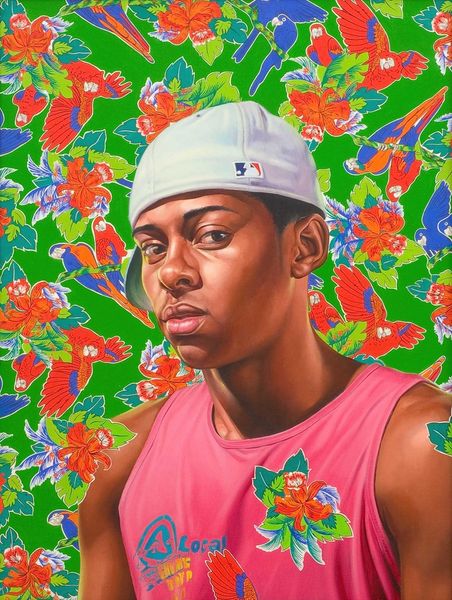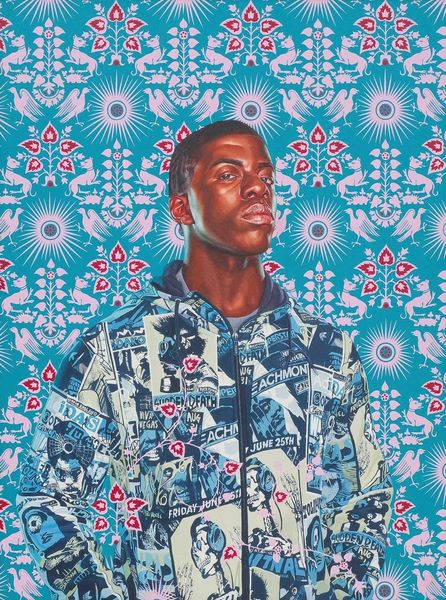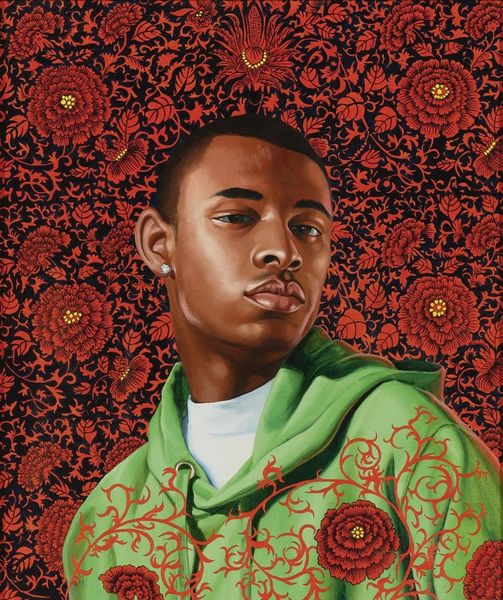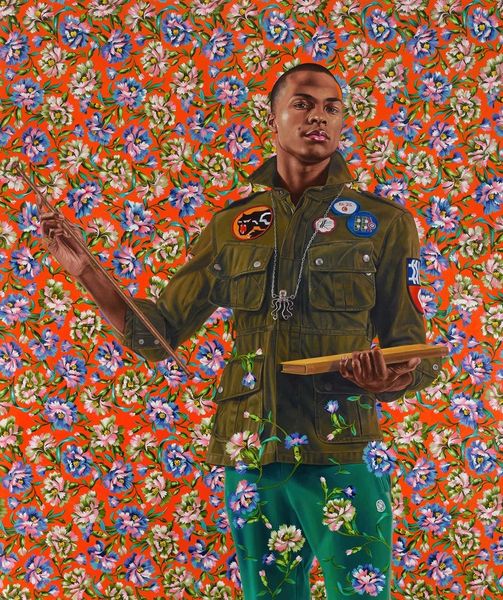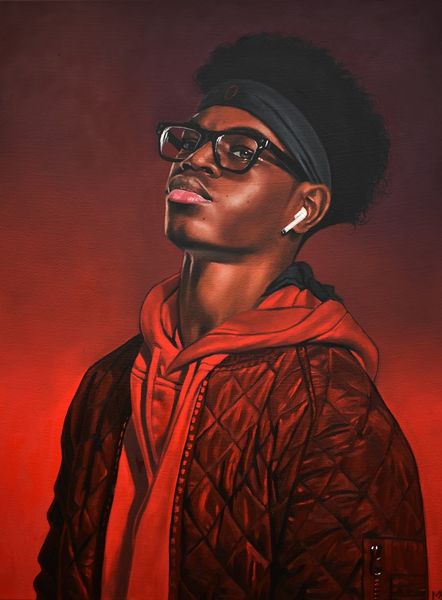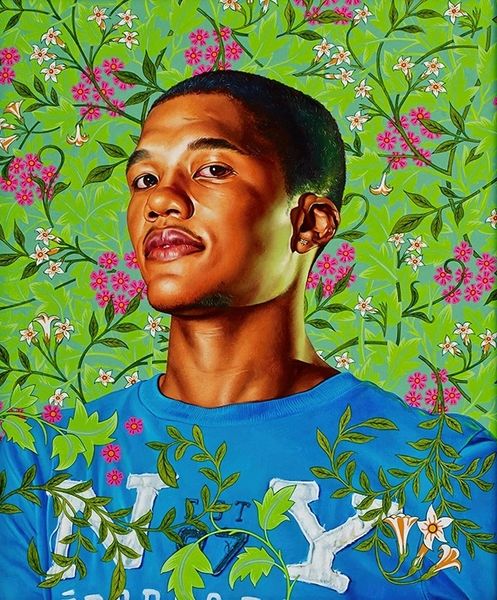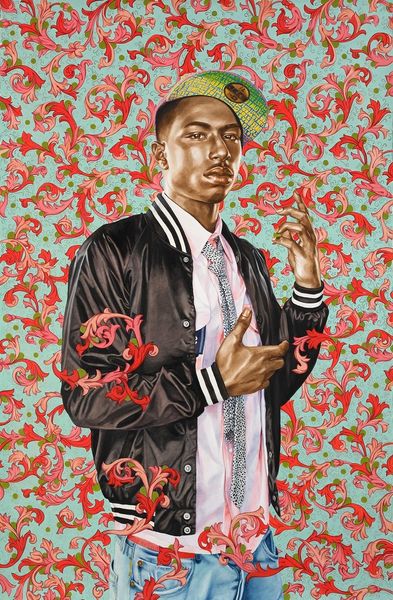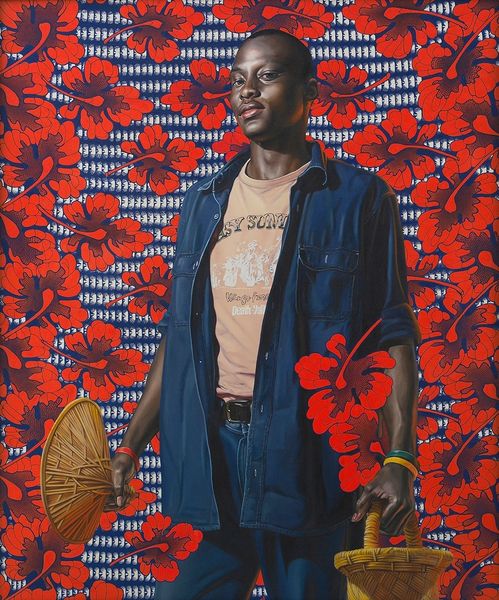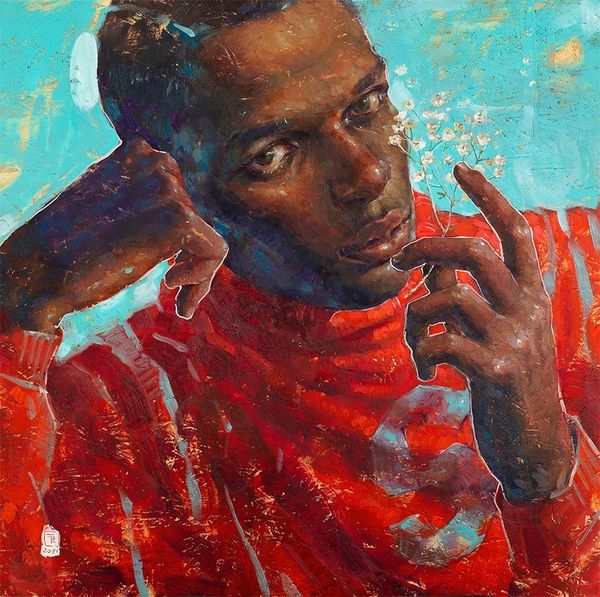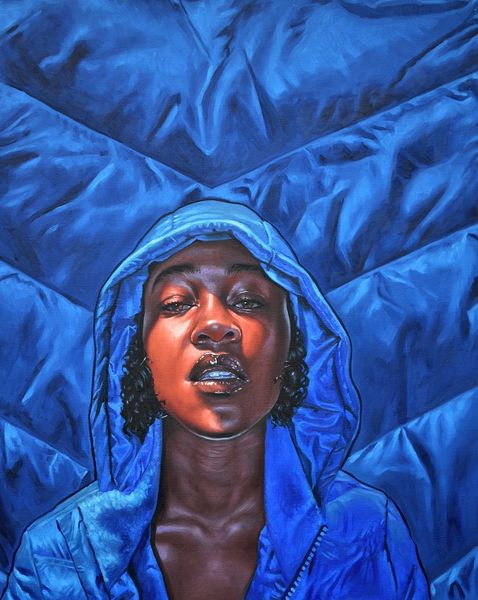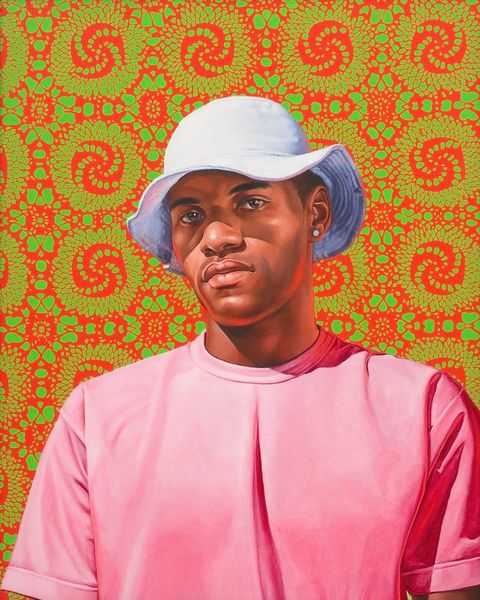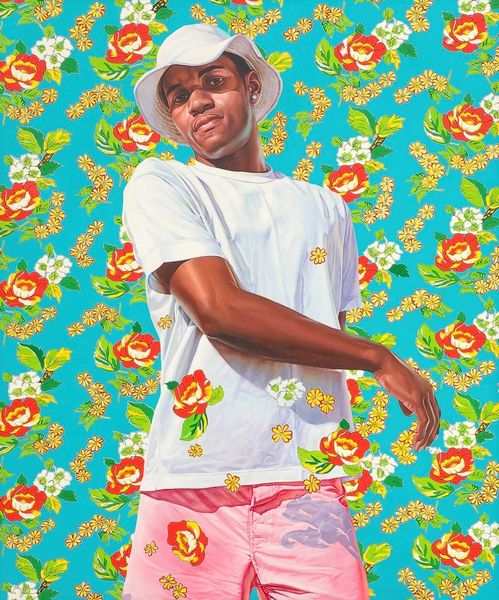
#
pattern-and-decoration
Copyright: Modern Artists: Artvee
Curator: Kehinde Wiley’s 2008 acrylic on canvas, Randerson Romualdo Cordeiro. Quite a statement piece, wouldn't you say? Editor: Absolutely! The immediate effect is striking – the figure's calm gaze juxtaposed with that riot of floral pattern creates a visual tension, a deliberate clash that's undeniably eye-catching. Curator: It is. Wiley’s practice often involves approaching individuals on the street and inviting them to be photographed in poses inspired by classical portraits, then setting them against elaborate, patterned backgrounds. It's a really interesting comment on power, representation and labor involved in art production, wouldn’t you agree? Editor: Certainly, the composition invites deeper consideration of form. Observe the symmetry disrupted by the cap, the figure turning his face... This disrupts conventional balance and challenges a straightforward interpretation. It isn't only about aesthetics; the color combinations create a vibrant emotional response that speaks across any boundary. Curator: And that is the beauty of Wiley's work. It references historical painting conventions but inserts black bodies into those narratives, highlighting a history of exclusion and exploring notions of race, masculinity, and social status within a framework traditionally reserved for the European elite. His artistic labor includes the participation and representation of those often not invited to that space. Editor: The application of the acrylic is flawless, and that almost photographic treatment to skin and the subject’s figure emphasizes the painting’s material reality. The texture plays against the flat quality of the flower wallpaper, underscoring both the depth and artificiality of the scene. It plays games with representation. Curator: It also calls into question the traditional art historical canon, examining how art reflects the political, economic, and social structures of its time, as well as inviting its viewers to reconsider labor dynamics that are essential to his craft. Editor: Exactly. Seeing the figure embedded in this complex design transforms his representation, placing him into another conversation that challenges and engages the viewer visually and, on some level, even viscerally. It's as if the art itself demands interaction with all of its formal parts! Curator: A beautiful analysis! Editor: Indeed, the work remains powerfully ambivalent long after our first viewing, making a long and lingering experience, doesn’t it?
Comments
No comments
Be the first to comment and join the conversation on the ultimate creative platform.
